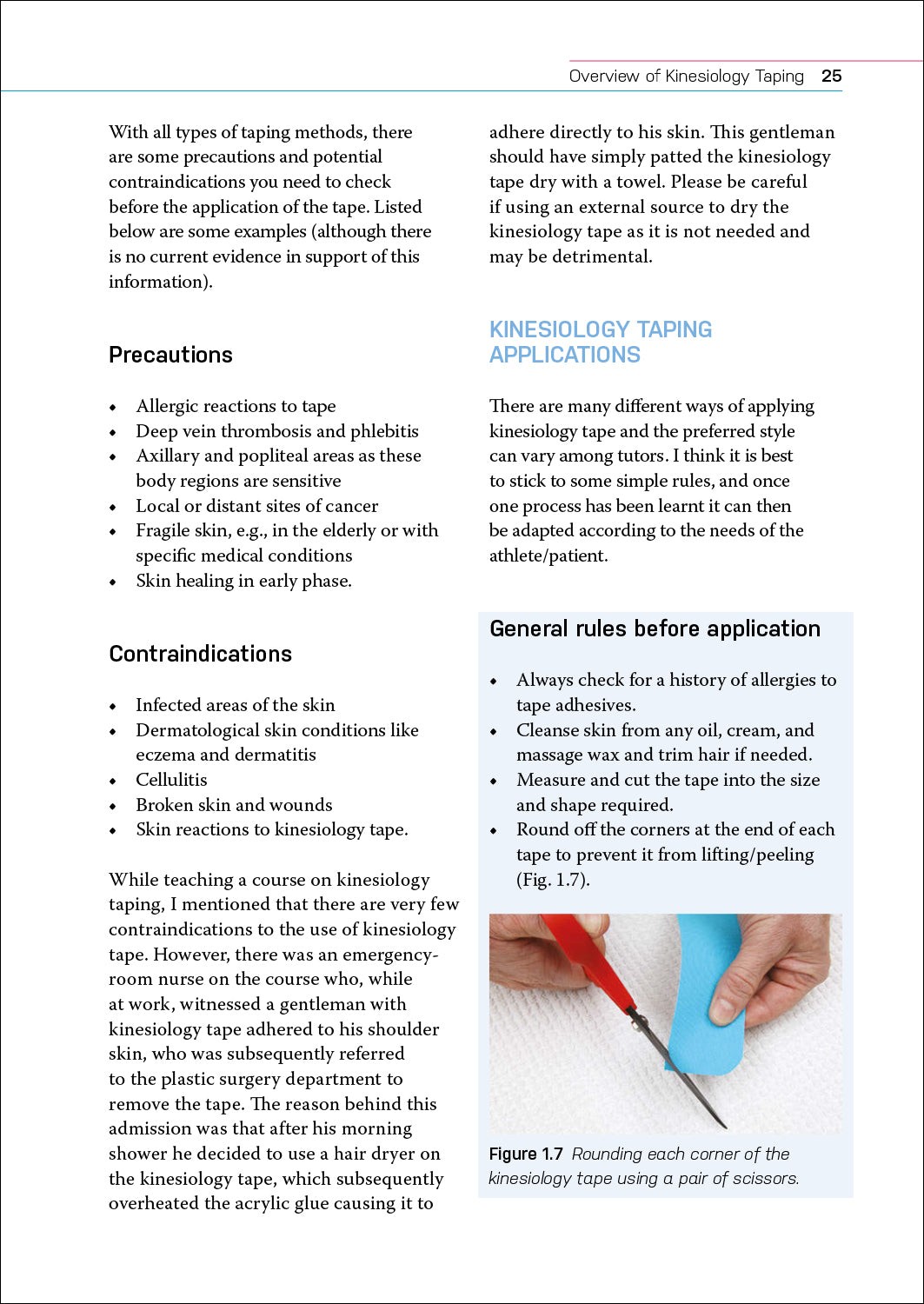Kinesiology taping has become a popular technique in sports medicine and rehabilitation. This guide delves into the practical applications of kinesiology taping, offering insights into injury prevention, treatment, and self-help strategies. Based on the expertise of leading sports medicine authorities, this resource provides a comprehensive overview of how to effectively utilize kinesiology tape for various conditions.
Understanding Kinesiology Taping
Kinesiology taping involves applying a specialized elastic tape to the skin to support muscles, reduce pain, and improve circulation. Unlike traditional athletic tape, kinesiology tape allows for a full range of motion while providing support and stability.
History and Evolution
The concept of kinesiology taping was pioneered in the 1970s by Dr. Kenzo Kase. Since then, it has evolved into a widely used technique by physical therapists, athletic trainers, and other healthcare professionals.
Kinesiology Tape vs. Athletic Tape
Traditional athletic tape is primarily used to restrict movement and provide rigid support. Kinesiology tape, on the other hand, is designed to mimic the elasticity of skin, providing dynamic support without limiting range of motion.
How Kinesiology Taping Works
Kinesiology tape works by lifting the skin, creating space between the skin and underlying tissues. This decompression effect can reduce pain, improve lymphatic drainage, and enhance muscle function.
Applying Kinesiology Tape: A Step-by-Step Guide
Effective kinesiology taping requires careful preparation and application. Here’s a step-by-step guide to ensure optimal results:
- Assessment: Identify the area of pain or dysfunction.
- Preparation: Clean and dry the skin thoroughly. Trim any excessive hair.
- Measurement and Cutting: Measure the required length of tape and cut accordingly. Round the edges to prevent the tape from peeling.
- Application: Apply the tape with the appropriate tension based on the desired effect. Different techniques, such as muscle support, space correction, and lymphatic correction, require varying levels of tension.
General Application Tips
- Avoid applying tape to irritated or broken skin.
- Apply tape at least 30 minutes before physical activity.
- Rub the tape to activate the adhesive.
- Remove the tape gently in the direction of hair growth.
Kinesiology Taping Techniques for Common Conditions
Kinesiology taping can be applied to various parts of the body to address a wide range of conditions.
Lower Limb Applications
- Plantar Fasciitis: Provides support to the arch of the foot and reduces tension on the plantar fascia.
- Ankle Sprains: Stabilizes the ankle joint and supports injured ligaments.
- Achilles Tendinopathy: Reduces strain on the Achilles tendon and promotes healing.
- Calf Strains: Supports the calf muscles and reduces pain.
- Shin Splints: Reduces inflammation and supports the muscles of the lower leg.
Knee Joint Applications
- Patellofemoral Pain Syndrome (PFPS): Improves patellar tracking and reduces pain around the kneecap.
- Iliotibial (IT) Band Syndrome: Reduces friction and inflammation of the IT band.
- Medial Collateral Ligament (MCL) Sprains: Provides support and stability to the medial side of the knee.
Thigh Applications
- Hamstring Strains: Supports the hamstring muscles and reduces pain.
- Adductor Strains: Supports the adductor muscles and promotes healing.
Lower Back, Trunk, and Pelvis Applications
- Lower Back Pain: Supports the lumbar spine and reduces muscle strain.
- Sacroiliac (SI) Joint Dysfunction: Stabilizes the SI joint and reduces pain.
- Rib Pain: Supports the rib cage and reduces pain associated with intercostal muscle strains.
Upper Back, Neck, and Chest Applications
- Neck Pain: Supports the cervical spine and reduces muscle tension.
- Postural Support: Encourages proper posture and reduces muscle fatigue.
- Pectoral Strains: Supports the pectoral muscles and reduces pain.
Upper Limb Applications
- Rotator Cuff Tendinopathy: Supports the rotator cuff muscles and reduces pain.
- Tennis Elbow (Lateral Epicondylitis): Reduces pain and inflammation around the lateral epicondyle.
- Golfer’s Elbow (Medial Epicondylitis): Reduces pain and inflammation around the medial epicondyle.
- Carpal Tunnel Syndrome: Decompresses the carpal tunnel and reduces nerve compression.
Edema Control
Kinesiology taping can also be used to reduce swelling and edema. The tape helps to lift the skin and create channels for lymphatic drainage.
- Ankle Edema: Reduces swelling in the ankle and foot.
- Knee Edema: Reduces swelling around the knee joint.
- Forearm Edema: Reduces swelling in the forearm.
Benefits of Kinesiology Taping
Kinesiology taping offers several benefits, including:
- Pain Reduction: By lifting the skin and reducing pressure on pain receptors.
- Muscle Support: By supporting weakened or injured muscles.
- Improved Circulation: By increasing space between the skin and underlying tissues, allowing for better blood flow and lymphatic drainage.
- Enhanced Proprioception: By providing sensory feedback and improving body awareness.
- Increased Range of Motion: By allowing for full movement while providing support.
Precautions and Contraindications
While kinesiology taping is generally safe, there are certain precautions and contraindications to consider:
- Skin Irritation: Avoid applying tape to irritated or broken skin.
- Allergies: Be aware of potential allergies to the tape adhesive.
- Diabetes: Use caution in individuals with diabetes due to potential skin sensitivity.
- Deep Vein Thrombosis (DVT): Avoid applying tape over areas affected by DVT.
- Active Cancer: Consult with a healthcare professional before using kinesiology tape.
The Importance of Professional Guidance
While self-application of kinesiology tape is possible, it’s crucial to seek guidance from a qualified healthcare professional, such as a physical therapist or athletic trainer. They can provide an accurate assessment, recommend the appropriate taping technique, and ensure proper application.
Conclusion
Kinesiology taping offers a versatile and effective approach to injury prevention, pain management, and performance enhancement. By understanding the principles and techniques outlined in this guide, individuals can harness the benefits of kinesiology taping to improve their overall well-being and athletic performance. Remember to consult with a healthcare professional for personalized guidance and to ensure safe and effective application.
